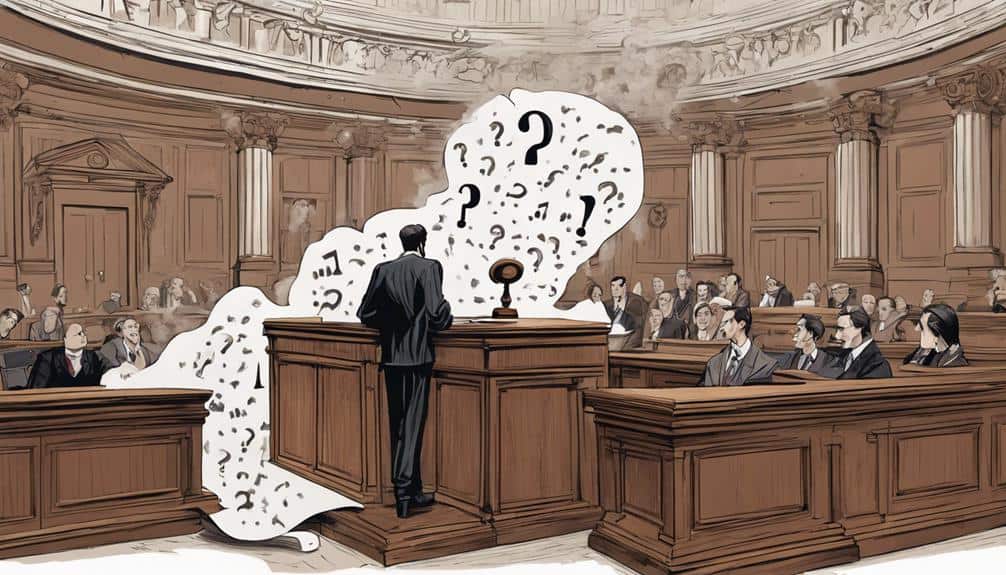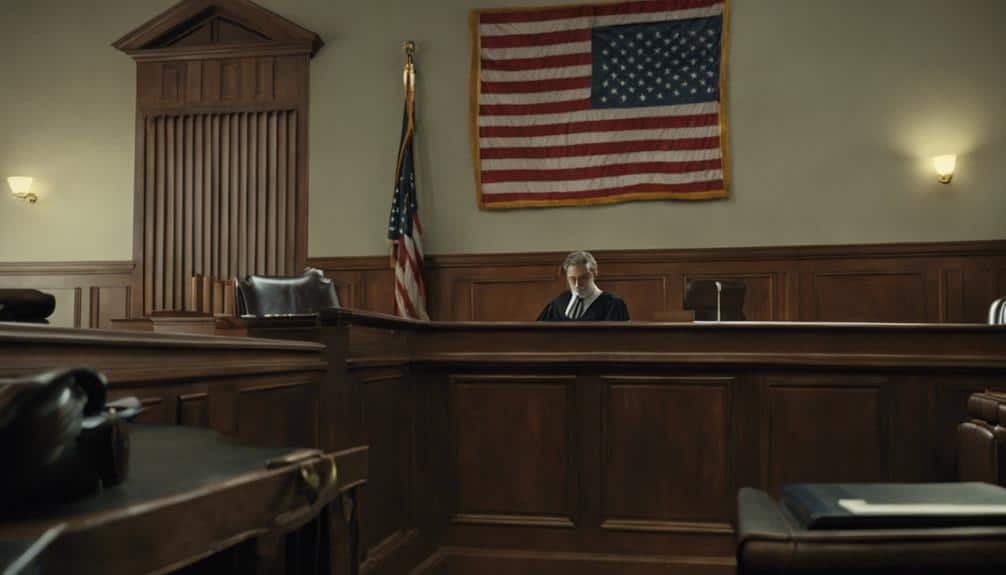You've been unfairly terminated, and now you're ready to take action. To sue your former employer for wrongful termination, follow these 5 essential steps. First, meticulously document the termination process, creating a timeline of events and gathering relevant documents. Next, understand the legal grounds for your claim, identifying potential discrimination, retaliation, or contract violations. Then, consult with an experienced employment attorney to navigate the complex legal process. After that, file a formal complaint with the appropriate agency, providing detailed information about your termination. Finally, accurately allege illegal termination, citing specific provisions of your employment contract and providing evidence to support your claim. Now that you've started the process, take the next step to build a strong case.
Key Takeaways
• Document termination process details, including a timeline of events, to build a strong case for wrongful termination.
• Understand legal grounds for wrongful termination claims, including discrimination, retaliation, and contract violations.
• Consult with an experienced employment attorney to navigate the complex legal process and maximize chances of a successful outcome.
• File a formal complaint with the appropriate agency, providing detailed information about the termination circumstances.
• Accurately identify and demonstrate illegal termination circumstances, including quoting specific provisions of the employment contract that were violated.
Documenting the Termination
When facing a wrongful termination, it's essential to meticulously document the termination process to build a strong foundation for your case. Every detail counts in establishing a clear and compelling narrative. You'll want to record all termination details, including dates, reasons given, and any relevant conversations.
Create a timeline of events leading up to your termination to establish a clear sequence of what happened. Keep copies of termination-related documents, such as termination letters or emails, and review your personnel file for any discrepancies or relevant information regarding your termination.
Additionally, maintain financial records to calculate potential losses like lost wages or benefits due to the termination. By doing so, you'll be able to accurately calculate lost wages and identify any termination discrepancies. Make sure to note all termination conversations, including dates and reasons given, as these will be essential in building your case.
Understanding Legal Grounds

To successfully sue for wrongful termination, you must understand the legal grounds that establish a valid claim, including discrimination, retaliation, contract violations, and violations of public policy.
If you believe you were fired for illegal reasons, such as discrimination based on a protected class like race, gender, or disability, you may have a strong case. Similarly, if you were retaliated against for engaging in protected activities, like whistleblowing, you may be able to file a wrongful termination lawsuit.
Violations of employment contracts, constructive discharge, and termination in violation of public policy are also common legal grounds for suing for wrongful termination. It's essential to understand federal and state laws that protect employees, such as Title VII of the Civil Rights Act and the Americans with Disabilities Act.
When considering a wrongful termination case, you'll need to prove illegal motives behind your termination and establish a causal connection between protected activities and your termination. An employment attorney can help you build a strong case by gathering evidence to support your claim.
Seeking Legal Advice

You should consult with an experienced employment attorney as soon as possible to guarantee you understand the legal aspects of a wrongful termination lawsuit and maximize your chances of a successful outcome. This important step will help you navigate the complex legal process and make sure you're taking the right approach.
Seeking legal advice can greatly benefit your case in several ways:
- Evaluate the strength of your case and advise on potential outcomes
- Guide you through the legal process, including negotiation, mediation, or pursuing a lawsuit
- Assist in gathering evidence and preparing documents to support your claim
- Represent you in court, if necessary, to safeguard your rights
Filing a Formal Complaint

After consulting with an attorney, you're ready to take the first formal step towards addressing your wrongful termination by filing a complaint with the appropriate agency. This initial step is pivotal in pursuing a wrongful termination lawsuit, as it sets the legal process in motion.
To file a formal complaint, you'll need to provide a detailed account of the termination circumstances, including specific information about what happened and why you believe it was wrongful. This information will help the agency investigate your claim and determine whether your employer violated any laws.
When filing your complaint, make sure to provide accurate and detailed information about the events leading up to your termination. This will help guarantee that your complaint is taken seriously and that the agency has a clear understanding of your situation.
Alleging Illegal Termination

When alleging illegal termination, accurately identifying the specific circumstances that led to your unlawful discharge is essential, as this will form the backbone of your complaint.
To prove wrongful termination, you must demonstrate that your employment was terminated based on illegal reasons such as discrimination, retaliation, or breach of contract.
To strengthen your claim, make sure to:
- Quote specific provisions of your employment contract that were violated
- Provide detailed evidence of the illegal termination, including dates, times, and witness statements
- File a formal complaint with the appropriate agency, signed by you or your attorney
- Ensure your complaint clearly outlines the legal grounds for your wrongful termination lawsuit, such as discrimination or breach of contract
Frequently Asked Questions
What Is the Most You Can Sue for Wrongful Termination?
When calculating how much to sue for wrongful termination, you'll need to take into account various factors. You can seek compensation for lost wages, benefits, and potential future earnings. You can also seek damages for emotional distress and punitive damages.
The maximum amount you can sue for varies, but consulting with an experienced employment attorney can help you determine a fair amount based on your specific situation.
Can HR Fire You Without Proof?
'Absence of evidence doesn't necessarily mean evidence of absence,' and this rings true when it comes to HR's ability to terminate you without proof.
In most US states, you're an at-will employee, meaning HR can fire you without justification. However, some states like Georgia require evidence for termination.
If you suspect wrongful termination, consult an employment lawyer to explore your options.
Which Example Would Most Likely Result in a Wrongful Termination?
You're wondering which example would most likely result in a wrongful termination claim.
Based on labor laws, if you were fired for reporting sexual harassment in the workplace, that would likely be the most clear-cut case of wrongful termination.
This is because retaliation for reporting illegal activities is a direct violation of your rights, and the law strongly protects employees who come forward with such claims.
How to Deal With Being Fired Unfairly?
You've been blindsided by an unfair firing, leaving you reeling like a ship without an anchor. But don't let the shockwaves of injustice drown you.
Take a deep breath, gather your bearings, and start charting a course for justice. You have rights, and it's time to assert them.
Begin by understanding the employment laws that protect you and start building a strong case with evidence and expert guidance.



